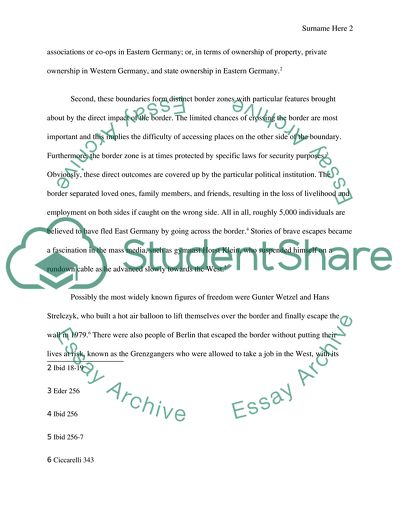Cite this document
(The Impact of the Inner German Border on East Germany and West Germany Coursework Example | Topics and Well Written Essays - 3500 words, n.d.)
The Impact of the Inner German Border on East Germany and West Germany Coursework Example | Topics and Well Written Essays - 3500 words. https://studentshare.org/history/1864637-the-inner-german-border-how-affected-the-boarder-zones-the-daily-life-on-both-sides
The Impact of the Inner German Border on East Germany and West Germany Coursework Example | Topics and Well Written Essays - 3500 words. https://studentshare.org/history/1864637-the-inner-german-border-how-affected-the-boarder-zones-the-daily-life-on-both-sides
(The Impact of the Inner German Border on East Germany and West Germany Coursework Example | Topics and Well Written Essays - 3500 Words)
The Impact of the Inner German Border on East Germany and West Germany Coursework Example | Topics and Well Written Essays - 3500 Words. https://studentshare.org/history/1864637-the-inner-german-border-how-affected-the-boarder-zones-the-daily-life-on-both-sides.
The Impact of the Inner German Border on East Germany and West Germany Coursework Example | Topics and Well Written Essays - 3500 Words. https://studentshare.org/history/1864637-the-inner-german-border-how-affected-the-boarder-zones-the-daily-life-on-both-sides.
“The Impact of the Inner German Border on East Germany and West Germany Coursework Example | Topics and Well Written Essays - 3500 Words”. https://studentshare.org/history/1864637-the-inner-german-border-how-affected-the-boarder-zones-the-daily-life-on-both-sides.


